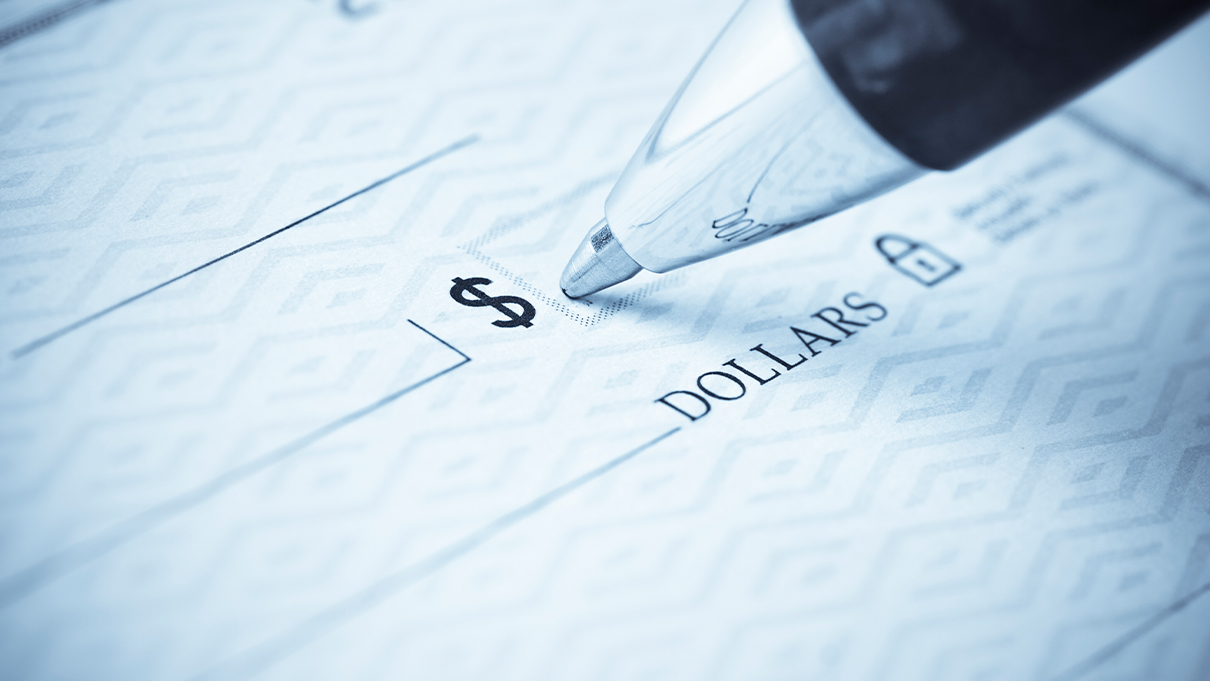How to write a check

In our increasingly electronic world, debit cards are everywhere. They’re fast and convenient, they’re secure and, because they withdraw funds from your account immediately, you’ll find out instantly if you don’t have sufficient funds in the account to cover the purchase.
So why should you learn how to write a check? It’s pretty simple: Sometimes, you don’t have another option. And if you do it wrong, it can cost you.
When might you want or need to write a check?
· When a business charges an extra fee for card payments. Governmental agencies and utility companies may accept debit or credit cards, but their third-party payment processors charge a fee on each usage. By writing a check, you actually pay less.
· When a business requires a minimum amount for card payments. Because of the fee businesses must pay on card transactions, your small purchases using a card might actually cost them money. To prevent this, they may not allow card payments for small amounts.
· When a business doesn’t accept card payments. From insurance and governmental transactions to donations, organization dues and rent, a variety of purposes still may require a check.
· During outages. Debit and credit card transactions require electronic equipment, which may not work if the power or phone systems aren’t working. In that situation, you’ll need cash or a check.
· When gifting money. Gift cards restrict where a recipient can use the money, and cash can’t easily be replaced if it’s lost, whereas checks solve both problems. After the check is deposited, the money can be used anywhere by the recipient, and if the check goes missing, you can always void it and send a new one.
Now you know why you should write a check, let’s talk about how to do it.
Writing checks correctly is important because, if you don’t, the check may bounce – that means, the funds won’t transfer and you’ll end up paying a fee for the failed transaction.
If you write a check without sufficient funds in your account, it’s considered a “bad” check. The bank may charge you a fee and, if you do it repeatedly, you could lose the ability to write checks altogether, not to mention the legal problems you’re risking.
So, here’s how to write a check:

1. In the top right corner, on the line marked DATE, write the current date. While it’s not illegal to write a date that’s still in the future – called “post-dating” – it’s a good idea to tell the person you’re paying so they don’t deposit it immediately. Banks may return checks with a missing or future date.
2. On the line marked PAY TO THE ORDER OF, write the name of the person or business to whom you are writing the check.
3. In the box following the dollar sign, write the amount of the check in numerals, including both dollars and, after the period, cents. For instance, 174.29.
4. On the line below, write out the same amount in words for the dollar amount and cents as a fraction out of 100. For instance, One hundred seventy-four 29/100. Draw a line from the end of the cents to the word DOLLARS to make sure no one else can change the amount you’ve written. Double check that the written amount matches the numeral amount – this is one of the most common mistakes, and banks may return such checks.
5. On the line marked MEMO, write what the check is for. For instance, “Babysitting” or, if you’re paying a bill, the account number the check should be applied to. That way, if your check gets separated from the account slip, it can still be processed.
6. On the final line in the bottom right corner, sign your name. This is one of the most important parts. Banks absolutely will return unsigned checks.
7. You’re done writing the check. Take another look at each blank. If you see a mistake, it may be possible to simply cross through it, write the correct information above it and initial the change. For more serious errors, write VOID in large letters across the entire check, flip to the next check in your checkbook and redo it.
8. When you’ve double checked everything, and the check is ready to give to its recipient, don’t forget to list it in your check register so you have a record of it later on, particularly if you don’t have carbon copies in your checkbook.
Happy check writing!

